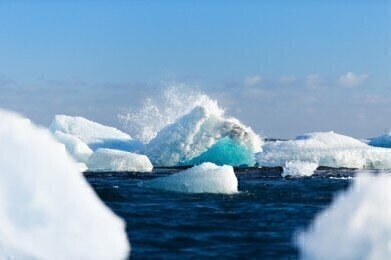Environmental Laboratory
What Are Antarctic Rifts and Are They Still Growing?
Sep 05 2016
We all know the Antarctic ice is melting. It’s one of the most notorious consequences of global warming. What does this mean? Parts of the Antarctic are breaking up. The parts that are disintegrating are surprisingly big and therefore act as a habitat to a large number of animals. In March it was reported that some of the Antarctic ice shelves were disintegrating – and fast. Time for an update. Has anything changed?
What are ice shelves?
An ice shelf is a platform of ice. They are attached to the grounded ice of Antarctica’s coastline. In fact, around 44% of the Antarctic coastline has ice shelves attached, with a total area of over 1,500,000km². The problem is that global warming is causing them to disintegrate.
This disintegration has been known to happen through iceberg calving, where chunks break off at the edge of a glacier. However, warming ocean waters have caused a new form of disintegration known as rifts. Rather than eroding from the outer edge of the shelf, ice thaws from the underside, causing a rift some distance from the edge. As the process continues, the rift grows and eventually a large section of the ice shelf is removed from the coastline.
The Larsen Ice Shelves
Scientists have been noticing these rifts in the Larsen Ice Shelves since the 1990s. In 1995 the Larsen A ice shelf disintegrated, before Larsen B broke up in 2002. Now, Midas – a team of scientists aiming to observe and track the changes in the Antarctic – have noticed a rapid break in the Larsen C ice shelf.
In March 2016 they noted that the ice shelf, which is over twice the size of Wales, had developed a considerable rift. And in August, they were shocked to find the rift had grown over 22km longer over the space of just 5 months. They have consequently updated the estimated loss to around twelve percent.
The importance of ice
The frozen land of Antarctica is important for a number of reasons. For one, it’s home to a hugely diverse range of species that are unique to its climate. But also it can be used for historic research. With an abundance of artefacts preserved in the snow, it can tell us a great deal about our planet’s environmental history.
An Italian research team, for example, went on an expedition to find traces of heavy metals. Their findings produced a record of past centuries’ atmospheres. Find out more about their insight into the changes in atmospheric pollution in ‘The Frozen Diary – history unlocked with the help of ultrapure water’.
Digital Edition
IET 34.2 March 2024
April 2024
Gas Detection - Biogas batch fermentation system for laboratory use with automatic gas analysis in real time Water/Wastewater - Upcycling sensors for sustainable nature management - Prist...
View all digital editions
Events
Apr 30 2024 Melbourne, Australia
Apr 30 2024 Birmingham, UK
May 03 2024 Seoul, South Korea
May 05 2024 Seville, Spain
May 06 2024 Minneapolis, MN, USA


















